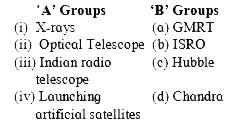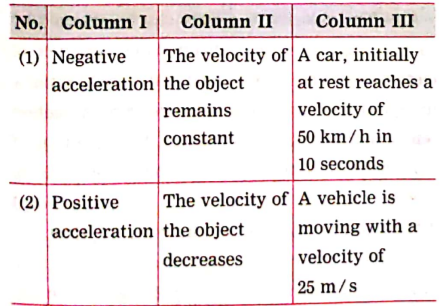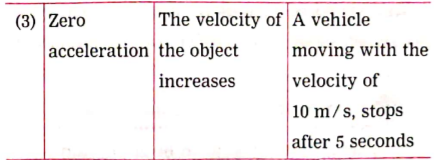Explain the construction of Galileo's telescope.Solution in Marathi
Step by step video solution for Explain the construction of Galileo's telescope. by Physics experts to help you in doubts & scoring excellent marks in Class 9 exams.
Updated on:21/07/2023Topper's Solved these Questions
- OBSERVING SPACE: TELESCOPESBOOK - BAL BHARTICHAPTER - OBSERVING SPACE: TELESCOPESEXERCISE - EXERCISES (Form pairs)
1 Videos
- LAW OF MOTIONBOOK - BAL BHARTICHAPTER - LAW OF MOTIONEXERCISE - Exercises
18 Videos
- REFLECTION OF LIGHT BOOK - BAL BHARTICHAPTER - REFLECTION OF LIGHT EXERCISE - USE YOUR BRAIN POWER
1 Videos
Similar Questions

View SolutionMatch the first column with appropriate entries in the second and third columns and remake the table:


View SolutionAnswer the following questions:
What is the difference between the principal focus of the concave and convex mirrors?
View SolutionWhat is the main limitation of Galileo's telescope ?
View SolutionIn a Galileo's telescope the focal lengths of the objective and the eyepiece are 0.3 m and 0.06 m respectively. Find the magnifying power and the length of the telescope.
View SolutionGalileo's law of odd numbers
View SolutionA Galileo's telescope has an objective of focal length 100 cm and magnifying power 50. The distance between the two lenses in normal adjustment is
View SolutionIn Galileo's telescope , the objective is …..lens but the eyepiece is ……….lens [fill in the blanks] .
View SolutionExplain the types of Telescope.
View SolutionDescribe the construction and working of an astronomical telescope.
View SolutionExplain the confusion with telescope and microscope.
View SolutionGalileo's law of odd numbers
View SolutionExplain the construction of refracting telescope by figure and obtain the equation of its magnification.
View SolutionExplain the construction and working of an astronomical telescope. find an expression for its magnifying power in normal adjustment.
View SolutionExplain the construction of Galileo's telescope.
View SolutionExplain the construction of a radio telescope.
View Solution
